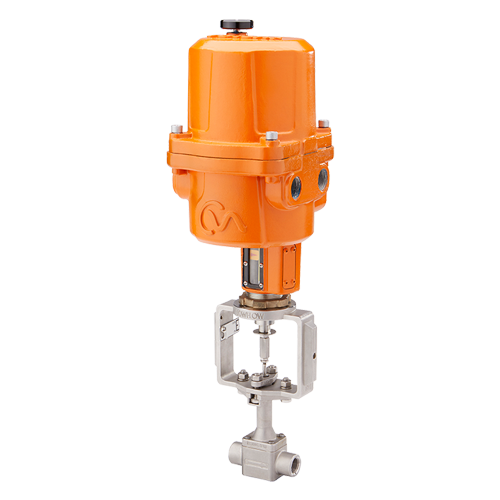
Maximize Power Financial Savings and Convenience With Advanced Building Automation Controls
In the realm of modern design and facility monitoring, the integration of advanced building automation controls stands as a critical innovation. The convergence of modern technology and sustainability has actually birthed a brand-new era where energy efficiency, convenience optimization, and functional streamlining are no much longer distant goals however attainable truths. By using the power of automation, buildings can adapt, respond, and develop in means that were once unbelievable. The possibility for significant power financial savings and boosted comfort is not simply a possibility but a pledge waiting to be satisfied. This standard shift in structure management holds the key to opening a world where ecological conscientiousness and owner wellness sympathetically exist side-by-side within the walls of our structures.
Energy Performance Benefits
Energy performance benefits can dramatically reduce power usage and functional prices in buildings. By executing energy-efficient techniques and modern technologies, building proprietors and operators can attain significant savings while additionally adding to ecological sustainability. One of the main benefits of improving energy effectiveness in structures is the decrease of utility costs. Energy-efficient systems, such as sophisticated building automation controls, can enhance making use of resources like home heating, lighting, and air conditioning, leading to reduced energy expenditures over time.
Additionally, boosted power effectiveness can prolong the life expectancy of structure equipment and systems. By operating much more effectively, heating and cooling systems, lighting components, and other building elements experience less wear and tear, causing decreased upkeep and substitute costs. In addition, energy-efficient buildings frequently regulate higher residential property values and rental rates, giving lasting economic advantages to owners.
Additionally, energy efficiency can boost resident convenience and efficiency. Appropriately managed interior environments with optimal illumination and thermal conditions develop an even more helpful and positive work area, leading to improved staff member satisfaction and performance. Overall, the energy efficiency benefits related to innovative structure automation controls are diverse, including price financial savings, ecological stewardship, and resident health.
Enhanced Convenience Control
Enhancing convenience control in structure atmospheres calls for a sophisticated integration of advanced automation systems for ideal owner health. By using advanced structure automation controls, centers can customize the indoor setting to satisfy the details needs and choices of passengers. control valves.
By integrating these sophisticated controls, structures can not only boost comfort however additionally boost power performance by optimizing system procedures based on real tenancy and usage patterns. Eventually, focusing on occupant comfort via advanced automation systems leads to an extra pleasurable and much healthier interior environment.
Operational Performance Improvements

Furthermore, the execution of real-time tracking and analytics devices allows structure drivers to identify energy inadequacies and operational abnormalities promptly. By constantly monitoring energy use patterns and system performance metrics, modifications can be made in real-time to maximize power consumption and guarantee peak functional efficiency. control valves. Additionally, integrating need feedback strategies into structure automation controls can better enhance operational efficiency by dynamically changing power use based on grid conditions and pricing signals
Indoor Climate Optimization
Efficient indoor environment optimization is a basic facet of structure automation controls, guaranteeing residents' comfort and wellness while making the most of power cost savings. By making use of advanced sensors and controls, developing automation systems can constantly check and readjust temperature, moisture degrees, air high quality, and air flow to produce an ideal interior over here atmosphere. Preserving comfy and regular problems not just improves resident contentment yet also increases productivity and overall well-being.
Interior environment optimization also plays an essential role in energy performance. By fine-tuning air flow, cooling, and heating systems based on real-time information and tenancy patterns, developing automation controls can substantially decrease power usage - control valves. For example, applying methods such as demand-controlled ventilation and thermal zoning can aid reduce energy waste while making certain that each location of the building obtains the required conditioning.

Sustainable Atmosphere Creation
Building automation regulates not just enhance interior environment conditions for power effectiveness and passenger convenience yet likewise lay the structure for producing a sustainable environment through strategic management of systems and resources. By integrating sophisticated building automation innovations, such as sensors, actuators, and smart software application, facilities can monitor and change power usage in real-time to minimize waste and lower their carbon footprint. These systems enable anticipating upkeep, identifying possible problems prior to they intensify and maximizing tools performance to boost durability and performance.
Additionally, sustainable setting creation expands beyond energy management to incorporate water conservation, waste decrease, and indoor air top quality enhancement. Structure automation controls can regulate water use, spot leakages, and guarantee correct garbage disposal techniques, contributing to general sustainability initiatives. Furthermore, by monitoring and regulating air flow and filtration systems, these innovations boost resident health and wellness and productivity while reducing power consumption connected with cooling and heating operations.
Final Thought
To conclude, advanced building automation manages offer considerable advantages in regards to energy financial savings, convenience control, operational efficiency, indoor environment optimization, and creating a sustainable atmosphere. By carrying out these controls, structures can attain ideal performance while decreasing power consumption and enhancing occupant convenience. It is noticeable that making use of sophisticated automation innovation is important in boosting building performance and creating a much more sustainable future.
Power effectiveness benefits can additional reading considerably reduce energy consumption and functional prices in structures. Generally, the power efficiency advantages linked with innovative building automation controls are complex, incorporating price savings, environmental stewardship, and owner well-being.
Additionally, integrating demand action techniques right into see this building automation controls can better enhance functional efficiency by dynamically adjusting power use based on grid problems and pricing signals.
Structure automation controls not just enhance interior environment conditions for power performance and occupant convenience yet additionally lay the foundation for producing a sustainable environment through tactical administration of sources and systems.In conclusion, progressed structure automation manages deal considerable advantages in terms of energy cost savings, comfort control, functional performance, interior environment optimization, and producing a sustainable environment.